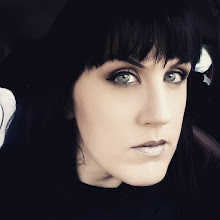Steampunk is one of those strange genres where people often know the name, but aren't entirely sure what it entails. In its simplest form, steampunk is usually set in Victorian London, but as it's a form of alternate history, the protagonists have access to all kinds of technology not seen in the history books - the only proviso being that is powered by steam.
According to Matthew's blog, "Steampunk, in its most simple definition, is a type of fiction that places contemporary technology in the Victorian Era with Coal (and thus Steam) as the primary power source instead of Gas or Electricity." If you check that goldmine of information (sic), Wikipedia, they define steampunk as "works set in an era or world where steam power is still widely used — usually the 19th century, and often Victorian era Britain — but with prominent elements of either science fiction or fantasy."
I agree with Matthew that historical accuracy isn't a major aspect of steampunk due to its inherent nature in the same way that much science fiction isn't strictly scientific in nature. Even the setting of steampunk can be fluid - it doesn't have to be London, although the period is pretty firm. Personally, I'd be fascinated to read steampunk set in 19th century Paris or Moscow. I believe the single 'fixed' point of steampunk is that it IS set in the past, and that the only technology available should be that which could conceivably be driven by steam. So you couldn't have electronics as it would be pretty difficult to power them with steam, but cars, airships, and other forms of machinery are all possible. The first internal combustion engine was designed in 1807 and Karl Benz began selling vehicles in 1888 so automobiles aren't entirely out of place.
However, I would argue that a book or film can have steampunk sensibilities, without necessarily being hardcore steampunk - China Mieville's Bas-Lag trilogy would be a good example. This is how I explain my own work, The First Tale. I chose a rough steampunk setting for my Tales from Vertigo City project, and Vertigo City is based on Victorian London, down to its brick-lined sewers and bizarre emporia. Transport comes via omnibuses and trams, although cars make a rare appearance. The clockwork automatons and antiquated weaponry are a nod to steampunk, while protagonist Philip Wiseman favours the frock coat fashions of a 'dandy'. It only really deviates from true steampunk in that a) it is not set in London, b) the fashions are not strict Victoriana, c) I got zombies and even steampunk mecha in there and d) Liss has the ability to throw energy bolts at people.
To me, the most important element of steampunk, besides the technological constraints and time period, is that is is fun. Alternate history has the potential to be fascinating and thought-provoking, but the nature of steampunk lends itself well to adventure stories, and personally, I think there just isn't enough adventure in mainstream fiction these days.
I'd be fascinated to hear what people think of steampunk!
* * *
The image for this post is by the stupidly talented Tom Brown, the artist behind steampunk web serial comic 'Hopeless, Maine'. More of his art can be found here, while Personal Demons, the current book in the serial, is here.
Don't forget, The First Tale is still only 99c on Smashwords. At the time of writing, that's just 63p!









5 comments:
I'm relatively new to the genre myself. I chose a sub-genre called Tessla-Punk which basically extends to the Edwardian Period and has devices like phonographs and oscillators. I just love the chance to set a fun story in this fascinating period of history...but where I make the rules (cue evil laughter).
I <3 Tesla because he tried to invent an earthquake machine and a death ray.
Thanks Icy- well done.
I thought that other then steam powered alternate reality, the time and place were fluid. And why would zombies make something NOT steampunk? Can't a stream powered world have a deadly virus too?
It's not even a fixed point to have Steampunk set in the past. See Stephenson's Diamond Age or Judson's Fitzpatrick's War for examples. Having Steampunk set in the past arose more because Jeter/Blaylock/Powers wrote the first "Steampunk" works and set them in the Victorian Age. The only real "rule" is that steam tech and mechanical science must be reasonably dominant.
Oh, and I'm glad you liked my thoughts. :)
ganymeder -- Steampunk can totally have zombies, but it's not a "traditional" thing to have them in the pure sort of Alt History SF that Steampunk is. Zombies are a staple of the Horror genre; hence some folks might say they're not "Steampunk." I'm with you though -- if your world needs zombies then throw them the heck in there!
Post a Comment